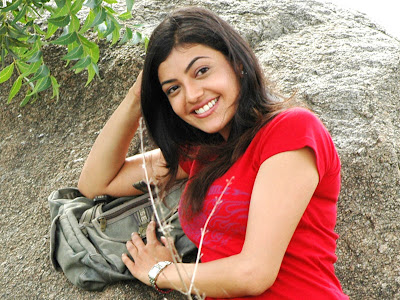The history of Indian Cinema began at the early part of the twentieth century. Malayalam cinema had to wait a few more decades to get its first film. The first feature film in Malayalam ‘Vigathakumaran’ was released in 1928. Produced and directed by the Chennai returned business man J.C.Daniel, who himself handled the role of the protagonist, the film stood apart with a social theme while mythological films ruled the film arena all over India.
Kerala had to wait another five years to get its next film, but only to be shelved after a few exhibitions due to a legal entanglement. ‘Marthandavarma’ based on the famous novel by C.V. Raman Pillai was produced by Sunderraj, a historical silent film, would have had a great impact on the cinema of South India if it had not met with legal confrontation.
The first Malayalam cinema with a sound track was released in 1938. The film ‘Balan’ produced by R.Sundaram and directed by Notani was a melodrama with more Tamil influence than Malayalam. Following the commercial success of ‘Balan’, more films like ‘Jnambika’(1940) and ‘Prahlada’(1941) came out to the theatres. P.J.Cheriyan’s ‘Nirmala’ (1948) was the first film to explore the possibility of music and songs in cinema. The lyrics of the film penned by the legendary Malayalam poet G.Shankara Kurup became so popular that song-dance sequences became essential ingredients of Malayalam cinema.
‘Jeevithanouka’ (1951) a melodramatic musical could be considered as the first ‘super-hit’ film with the first Malayalam ‘super-star’, Thikkurishi Sukumaran Nair. The success formula of ‘Jeevithanouka’ was repeated for many films to come out after that till the path breaking film ‘Neelakuyil’ saw the light.
‘Neelakuyil’ (1954) broke away from the Tamil – Hindi influence of Malayalam cinema and had an authentic story penned by renowned writer Uroob. Directed by the duo of P.Bhaskaran and Ramu Karyat, the film dealt with the story of untouchables prevailed in the society. This also was the first Malayalam film shot outdoors and also the first film to be recognised in the National level.
The next year saw yet another novel venture in Malayalam cinema. A group of students, influenced by the wave of neo-realism in the West, ventured out to produce the film ‘Newspaper Boy’, directed by P.Ramadas. The film which came out even before Satyajit Ray’s ‘Pather Panchali’, dealt with the issue of poverty.
The first full-length colour film of Malayalam came out in 1960, ‘Kandam Bacha Coat’, which otherwise was a film of no much relevance.
‘Chemmeen’ (1965) directed by Ramu Karyat was the first South Indian film to bag the President's Golden Lotus Award for the best film. Based on the famous novel by renowned Malayalam writer Takazhi Shivashanakara Pillai, ‘Chemmeen’ pioneered the growth of Malayalam cinema in technical and artistic aspects. It brought together some of the best technical talents then available in India, Salil Chowdhari (music), Markes Burtly (cinematography) and Hrishikesh Mukhargee (editing). It also had a huge star cast.
Some of the films like P.N.Menon’s ‘Oolavum Theeravum’ (1969) announced the arrival of a great movement, which changed the face of Malayalam cinema during the early 1970s.
The early 1970s witnessed a radical change in the perspective towards cinema by filmmakers as well as film viewers of Kerala. The beginning of film society movement resulted in the exposure to world classics, which helped a group of young filmmakers realise the uniqueness of the language of this medium, which till then was in the clutches of the forms used for stage dramas. Influenced by the French and Italian New Wave, as elsewhere in India, the Malayalam New Wave was born. The arrival of young filmmakers from the newly constituted Film Institute in Pune acted as a catalyst for this radical change.
Adoor Gopalakrishnan’s ‘Swayamvaram’ (1972) unplugged a stream of extraordinary films, often termed as ‘Parallel Cinema’, by film institute trained and self-taught young directors, which surpassed the superficiality of mere story telling and made maximum use of the possibilities cinema as a medium. Through ‘Uttarayanam’ (1974) G.Aravindan joined this movement followed by directors like P.A.Backer with ‘Kabani Nadi Chuvannappol’ (1975), K.P.Kumaran with ‘Athithi’ (1975) and K.R.Mohanan with ‘Ashwathama’ (1978). Renowned writer M.T.Vasudevan Nair made his directorial debut with ‘Nirmalyam’ (1973), which won the Golden lotus award, during this period. Padmarajan and K.G.George who later became the proponents of the stream of cinema often termed ‘Middle Cinema’ too made their debuts in 1979 with their films ‘Swapnadanam’ and ‘Peruvazhiyambalam’ respectively.
Even though the Parallel Cinema movement had a slow down during 1980s, some of the best films of Malayalam cinema from directors like Adoor and Aravindan came out during this period. Shaji.N.Karun’s ‘Piravi’ (1988) created stir in the International Film Festival circuits and refreshed the Malayali film sensibility. The major development during this decade was the growth of another stream of Malayalam cinema, the ‘Middle Cinema’, which fused the artistic qualities of ‘Parallel Cinema’ and the popular form of the commercial Malayalam cinema. This resulted in the birth of a number of films with down to earth stories, but with most of them becoming commercial successes. K.G.George with his films ‘Kolangal’ (1980), ‘Yavanika’ (1982), ‘Lekhayude Maranam Oru Flashback’ (1983), ‘Adaminte Variyellu’ (1983) and ‘Irakal’ (1985), P.Padmarajan with his films like ‘Oridathoru Phayalwan’ (1981), Koodevide? (1983), ‘Namakku Parkan Munthiri Thoppukal’ (1986), ‘Moonnampakkam’ (1988) and ‘Aparan’ (1988), Bharathan with ‘Lorry’ (1980), ‘Marmaram’ (1982) and ‘Ormakkayi’ (1982), Mohan with ‘Vidaparayum Munpe’ (1981), Lenin Rajendran with ‘Chillu’ (1982) and ‘Meenamasathile Sooryan’ (1985), Pavithran with ‘Uppu’ (1986) and K.S.Sethumadhavan with ‘Oppol’ (1980) all were strong presence in Malayalam cinema during the 80s.
Barring films from Adoor, Aravindan and Shaji 1990s didn’t see much good films. Murali Nair’s film ‘Maranasimhasanam’ (1999) was an exception. T.V.Chandran who started with ‘Alicinte Anveshanam’ (1989) too continued with his films like ‘Ponthan Mada’ (1993) ‘Ormakalundayirikanam’ (1995) and ‘Mankamma’ (1997). The commercial cinema came out with films cut-off from the real Kerala society and larger than human chauvinist characters. Soft porno films too flooded the theatres, which won huge commercial gains.
The new millennium too didn’t had much to offer to Malayalam cinema, though some works like Sarath’s ‘Sayahnam’ (2000) and ‘Stithi’ (2002), Satish Menon’s ‘Bhavam’ (2002), Rajiv Vijayaraghavan’s ‘Margam’ (2003), T V Chandran’s ‘Susannah’ (2001), ‘Danny’ (2001), ‘Padam Onnu Oru Vilapam’ (2003) and ‘Kathavasheshan’ (2004), Adoor’s ‘Nizhalkkuthu’ (2004) and Pradip Nair’s ‘Oridam’ (2005) came out during this period.
The three giants of Malayalam Cinema: Adoor, Aravindan and John





















